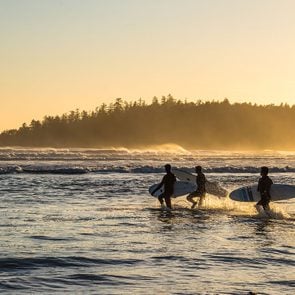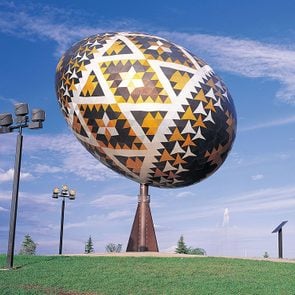Welcome to St. Martins, New Brunswick
Jane LeBlanc takes us on a tour of her adopted hometown—this charming village on the beautiful Bay of Fundy.
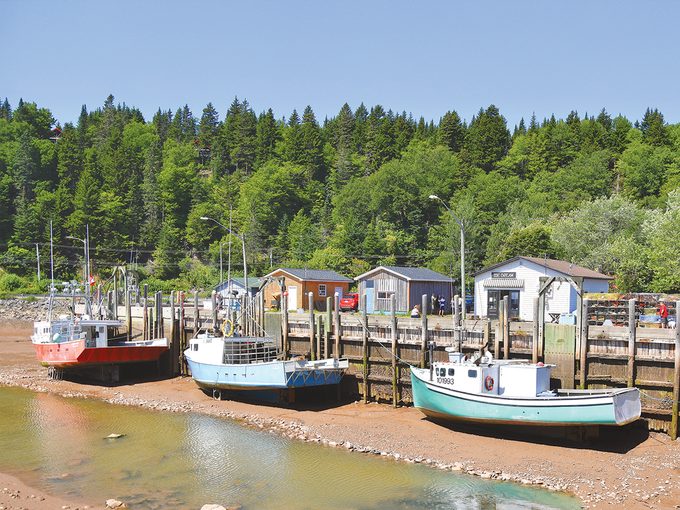
I live in the tiny, picturesque village of St. Martins, New Brunswick, but I’m not from here, originally. I’m “CFA” or “Come from away.” I was born and raised in London, Ontario, a good-size city. So you can imagine the culture shock at moving to such a small place. The population of St. Martins is under 300 year-round residents. But what it lacks in size, it more than makes up for in warm Maritime welcome and stunning scenery.
The Story of St. Martins, New Brunswick
St. Martins is located about 50 kilometres east of Saint John, on the Bay of Fundy coast. Artifacts found in the area prove there were people here as early as 10,000 years ago. The Mi’kmaq people named this place “Quaco” and folks generally translate that as meaning “haunt of the hooded seal.”
The first Europeans here in the 1600s were the French. The area went back and forth between the British and French several times. Mathias Moran was one of the original settlers of St. Martins. He arrived in October 1783 after the war ended and members of the King’s Orange Rangers, who had fought in the War of Independence but were loyal to the British king (hence the name “Loyalist”) were granted land in St. Martins, and a permanent settlement began.
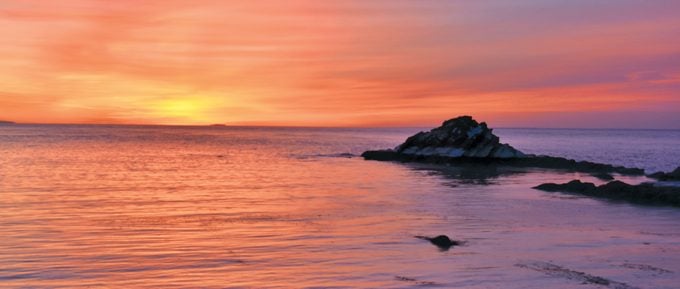
Most of the soldiers had been farmers before enlisting, but in St. Martins they discovered forests growing right up to the high tide mark. The trees growing here were perfect for building wooden sailing ships, and the sloping beaches acted as natural dry docks. Thus, a ship-building industry was born, and continued for 100 years. There were approximately 500 sailing ships built in and around St. Martins. They travelled the world and made quite a reputation for the village. At that time, since water was the only way to get here, St. Martins was self-sufficient with its own banks, churches, schools, hotels, a dentist, a doctor, all types of stores, saloons, restaurants and even an undertaker! The population never grew to more than 3,000 residents. Today, the Quaco Museum on Main Street is an excellent place to discover the village’s shipbuilding history.
As sailing ships were replaced by steam engine vessels, St. Martins turned to the forest for its livelihood. Then, since there was now a road to Saint John, many travelled it to work in industries there and many still do today.
St. Martins Today
What is left here now is a quaint seaside village, with restaurants, campgrounds, general store, and lots of cabins and cottages to rent. Several of the historic homes have been turned into country inns, which all have their own story to tell. Fresh lobster and scallops are available in-season from fishermen on the wharf. Adventures await as well: kayaking and hiking with guides can be booked locally.
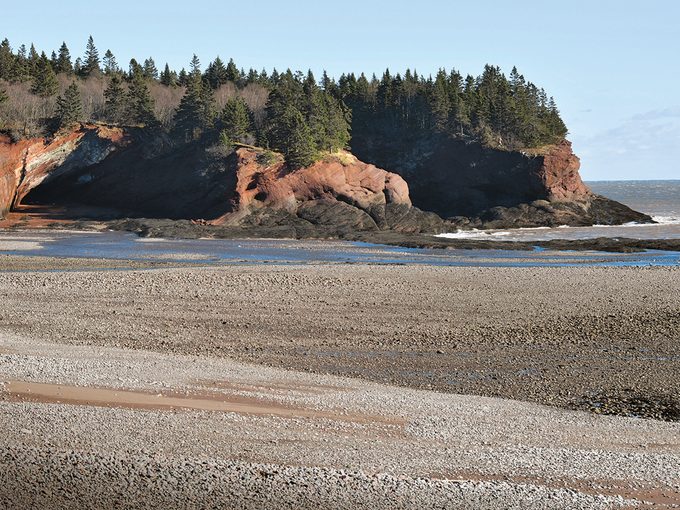
Did I mention the scenery? It is spectacular! Not grand like the Rockies, but unique in its own way. The Bay of Fundy is known for the highest tides in the world, which can be seen in St. Martins, and at low tide, you can walk on the ocean floor. The sea caves at the eastern end of the village are part of the Stonehammer UNESCO Global Geopark. The United Nations has also designated the area as a Biosphere Reserve. It’s truly a special place on Earth. The red sandstone cliffs are from the Triassic period, being about 230 million years old. At low tide, you can walk out and explore the caves, and at high tide, you can kayak into them!
Read up on the natural wonders of Canada.
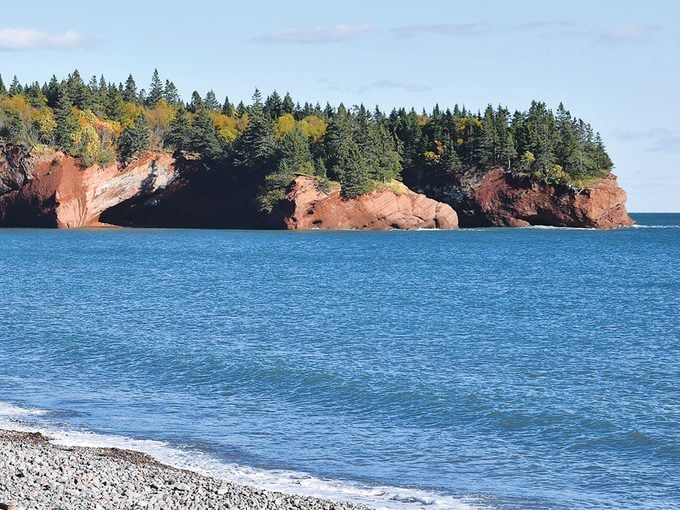
The high tides also affect the harbour. Fishermen can only get their boats in or out for about two hours on either side of high tide. No nine-to-five for them! Also at the harbour, you will find not one, but two covered bridges. It’s the only place I know of in Canada where you can get a photograph of two covered bridges in the same shot. Recently, one of the bridges was deemed unsafe, so a bailey bridge has been built to go around it, but it still makes for a great photo-op. Since vehicular traffic is no longer going through the bridge (it’s still safe to walk or bike through), it has been used for other things. Last year, for instance, the village Christmas tree was put on display there—even a couple of weddings have taken place inside the bridge. The harbour also boasts the village of St. Martins Tourist Information Centre, which is a replica of the original Quaco Head Lighthouse. The current lighthouse is visible across Quaco Bay.
Check out more beautiful lighthouses across Canada.
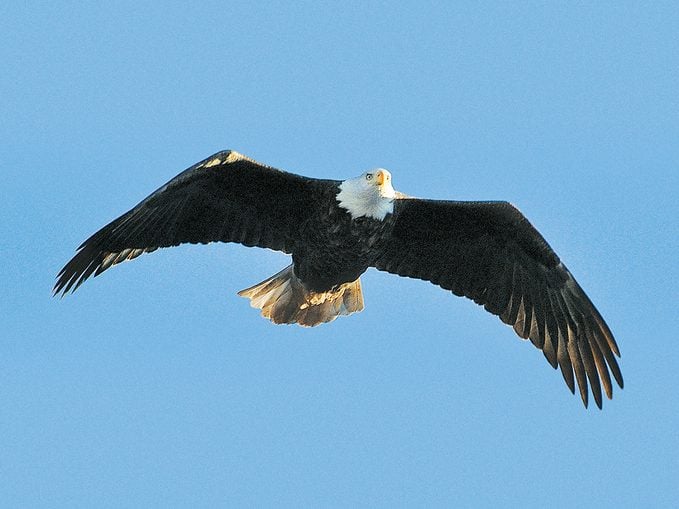
Pristine Wilderness Awaits
St. Martins is also the gateway to the Fundy Trail—a 2,559-hectare park featuring a low-speed driving parkway that takes you through some of the last undeveloped shoreline on the eastern seaboard. There is a hiking path as well, which is part of the Fundy Footpath. It has been named one of the top ten hiking trails in the world. Many parking lots offer time to enjoy spectacular vistas. Some are wheelchair accessible. Picnic tables encourage more time to enjoy the views. There is an interpretive centre at Big Salmon River, which offers washrooms, gift shop and a short film on the area and its history. A short walk from there is the cable suspension bridge over the river, where you can look down into the pristine water and watch for salmon. The parkway is open to drive from St. Martins to Sussex, a town inland from the bay. In two or three years, the road will be expanded, so you will be able to drive the parkway all the way to Fundy National Park.
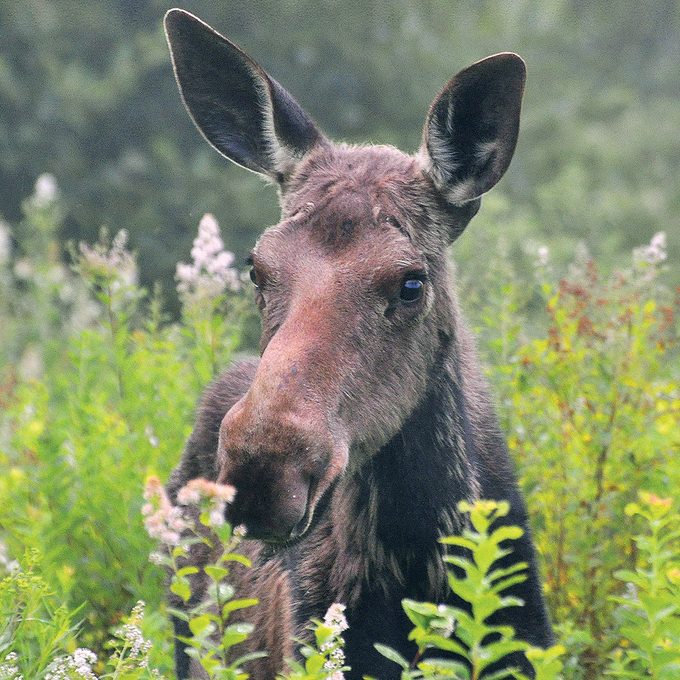
Wildlife is plentiful here, too. Whitetail deer are a nuisance to some. Moose, bears, foxes and many migrating birds are here for those who know where to look. A pair of bald eagles nest in the marsh. Harbour seals and occasionally harbour porpoises can be seen in the water.
These are only some of the many wonderful things I love about St. Martins, New Brunswick—my adopted home. The best way to see all these fabulous sights is to come and visit. We’d love to see you one day.
Discover more essential experiences on the east coast of Canada.
